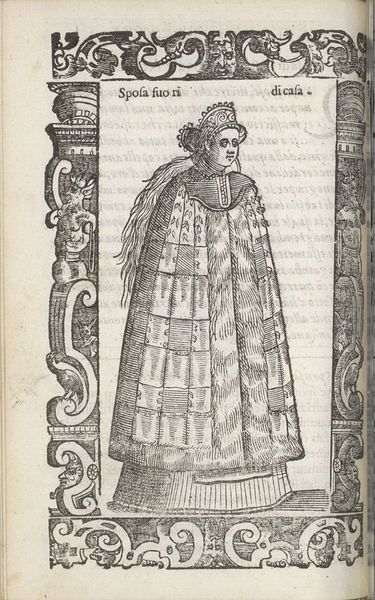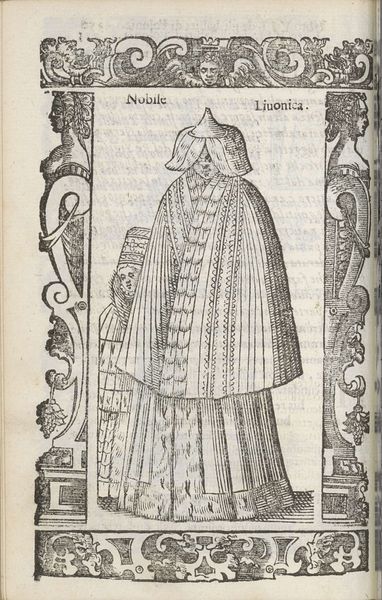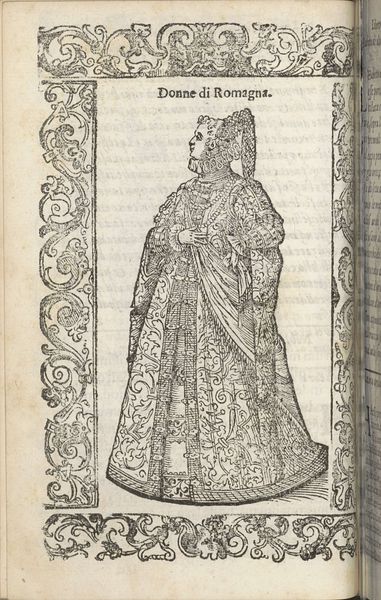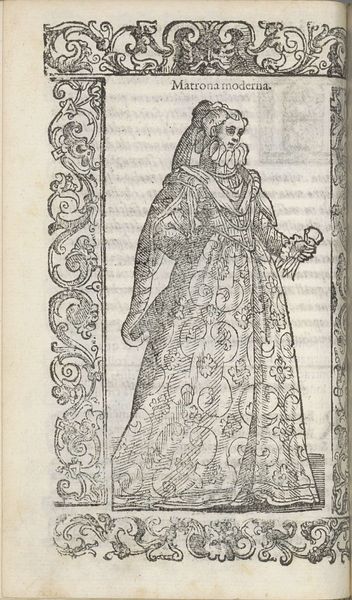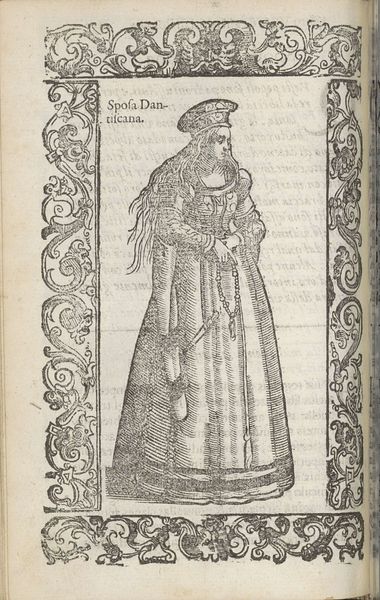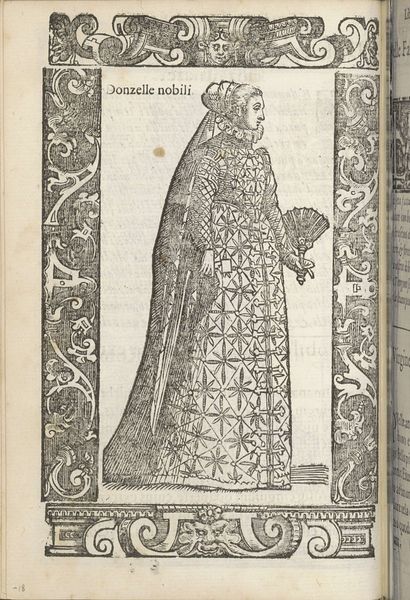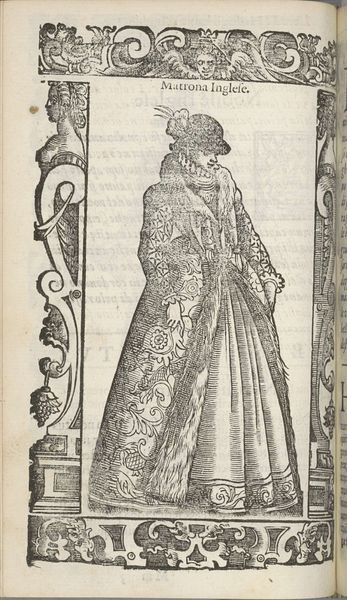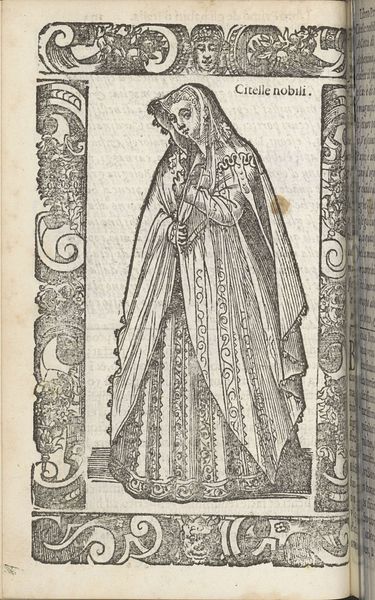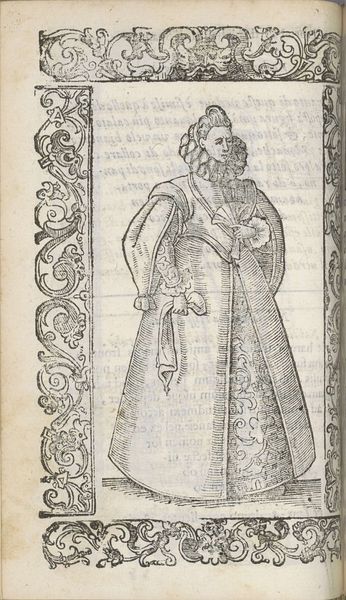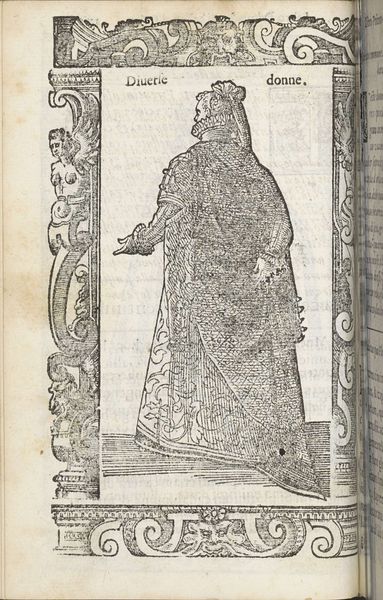
drawing, print, ink, pen, engraving
#
portrait
#
drawing
# print
#
mannerism
#
figuration
#
ink
#
pen
#
northern-renaissance
#
engraving
Dimensions: height 167 mm, width 125 mm
Copyright: Rijks Museum: Open Domain
Curator: Let’s discuss "Matrona di Baviera" created in 1598 by Christoph Krieger, a pen and ink engraving. Immediately striking is the woman's stiff, almost doll-like pose. The use of stark, contrasting lines adds a severity to her demeanor. Editor: I'm intrigued by what that severity might signify. Here we see a very literal encoding of patriarchal structures within her clothing. Her garments create confinement, and communicate wealth and status. Look at the miniscule detail put into capturing these textures and geometric patterns, literally overwriting the female form. Curator: The emphasis on linear precision and pattern certainly suggests a Mannerist sensibility overlaid onto what we would call a Northern Renaissance interest in minute detail. Note the calculated placement of shadow and the rendering of her garments; it is almost mathematical. Editor: I think it speaks to broader cultural anxieties surrounding female power in the late 16th century. It is clear she has it, but the way she is visually contained underscores an attempt to manage that power, perhaps as a reflection of gender hierarchies, which were quite obviously not designed to favor women in positions of authority. Curator: You've correctly observed the contextual frame, but her material richness seems just as carefully delineated as is her perceived role in Bavarian society. The engraver has also paid incredible attention to her headdress, which subtly frames her face, which could communicate both cultural identity and marital status. Editor: Yet that very careful attention could also read as fetishization. This image acts as both record and tool, solidifying expected behaviors while simultaneously underscoring her worth as defined by lineage and societal role. The engraving is literally capturing a specific type of privileged experience. Curator: Perhaps, but on closer inspection, consider the exquisite control Krieger achieves over line and form—an achievement in its own right that speaks to a broader humanist project—transcending purely didactic functions of visual portraiture, and the status that portraiture communicates. Editor: So, for me, this image acts as a reminder to critically consider the relationship between presentation and lived reality, particularly for women who historically had little autonomy over either one. The skill embedded within this engraving, for me, underscores that uneasy balance of artifice and genuine expression, offering a stark window into both past limitations and the continued potential for resistance.
Comments
No comments
Be the first to comment and join the conversation on the ultimate creative platform.
